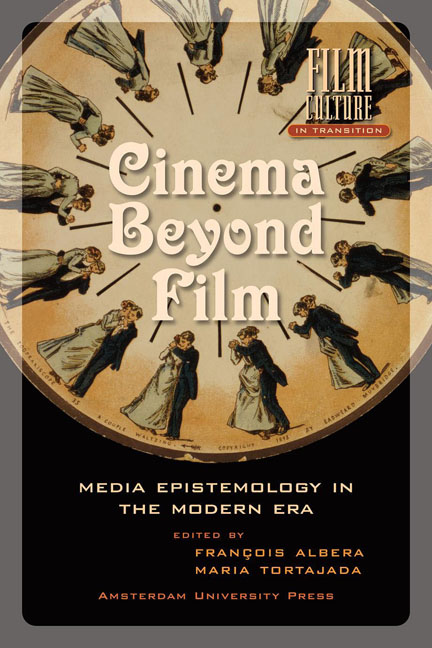The Lecturer, the Image, the Machine and the Audio-Spectator: The Voice as a Component Part of Audiovisual Dispositives
Published online by Cambridge University Press: 22 January 2021
Summary
When one examines the various uses that were made of sound before talking films became the general rule and that have been recently brought to light by research into the archaeology and history of the cinema by scholars such as Jacques Perriault, Giusy Pisano or Rick Altman, one is struck by the fact that the co-presence of a voice and a visual representation makes up one of the major hallmarks of ‘cinema’, whether one extends one’s epistemological viewpoint to cover earlier spectacles, the technologies then available, or the tangle of cultural sequences to which cinema – in its various disguises – belonged. The interest that early cinema historians such as Germain Lacasse have shown over the last decade for the figure of the lecturer (known in francophone historiography as the bonimenteur – the smooth talker or ‘barker’) is the sign of a new way of conceiving of this period and a desire to rehabilitate not just the vocal element, but also more generally the oral dimension of what were essentially ephemeral ‘events’ – cinematographic projections.
In this article, my aim is to put forward a conceptual framework that can be used when studying the ways in which the voice of a speaker – whether live or recorded – is integrated into (pre-)cinematographic spectacles. There are many differences between the two types of voice production, but they both raise the question of the place and function given to a specifically human characteristic within a dispositive that for the greater part is governed by technological parameters.
To study the discursive networks that are associated with historical objects such as lecturers, machines for audiovisual representation or the means of (tele-) communication – whether real or imagined by scientists or novelists – one may use a theoretical framework that is gradually (and reciprocally) built up on the basis of the discoveries of new practices or inventions and that is used to organise the information that is gleaned from work on the various sources. In my view, the notion of dispositive is a productive one, as it allows one to link the study of voice production with that of other parts of the spectacle, and thus to reach a better understanding of what is specific in the role that falls to the voice.
- Type
- Chapter
- Information
- Cinema Beyond FilmMedia Epistemology in the Modern Era, pp. 215 - 232Publisher: Amsterdam University PressPrint publication year: 2012



